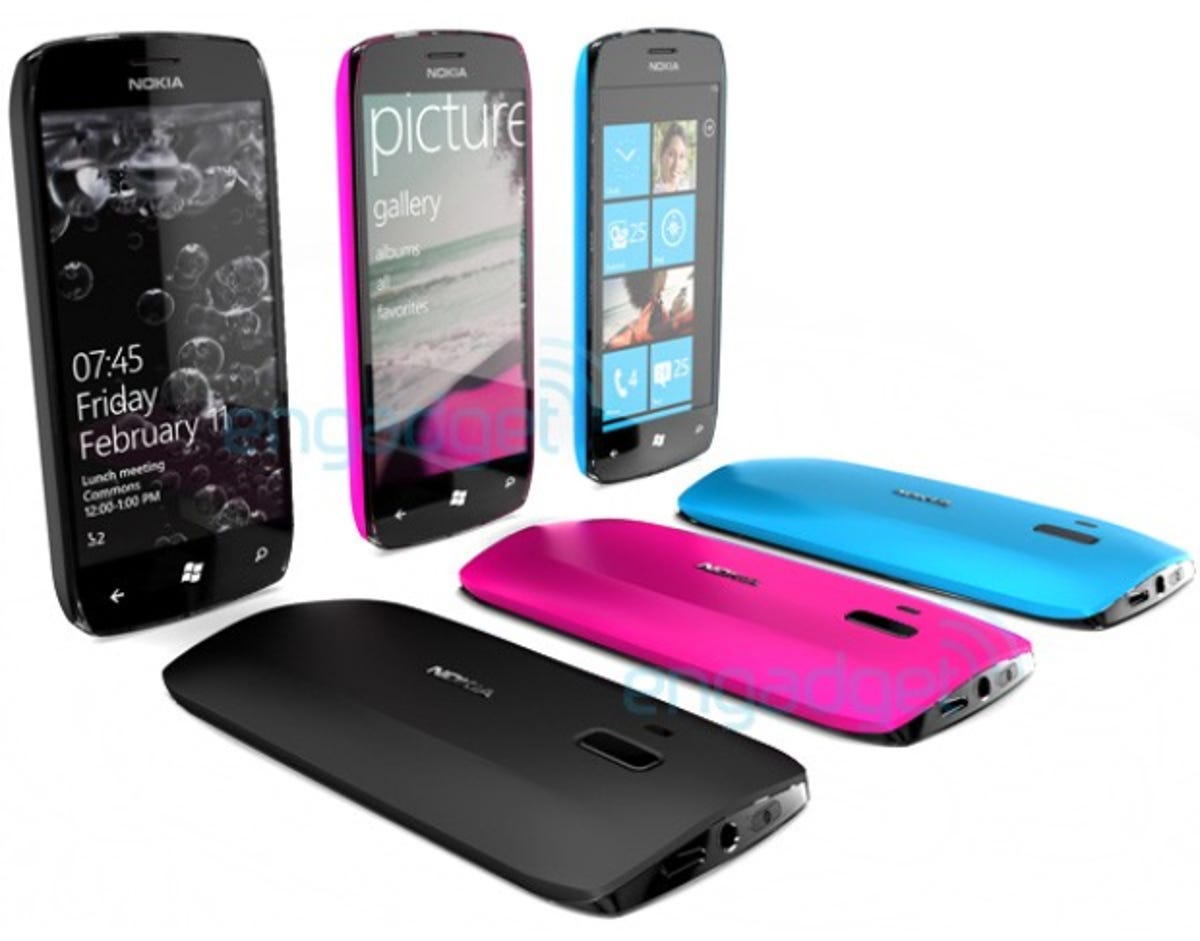
Nokia is making Windows Phone 7 smart phones, as we found out yesterday, but it doesn’t have any to show off in public yet. In private? A different story, possibly. A leaked photo appears to show the first evidence of what we can expect Finnish phones running Microsoft’s software to look like.
We know what you’re thinking: someone has just Photoshopped Windows Phone 7 screenshots on to some Nokia C7 handsets and made merry with the colouring tools. It’s possible.
Engadget, which published the photo, maintains these are genuine ‘conceptual devices’ knocked up by Microsoft and Nokia. If so, they won’t necessarily go on sale, but at least show the direction of the two companies’ thinking — grafting WP7’s signature three physical buttons on to Nokia’s 2010-era Symbian handset design. The effect is definitely striking.
At yesterday’s press event in London, Stephen Elop and Steve Ballmer both refused to even suggest a timescale for the first joint mobiles to come out. “When there’s news there will be news,” said Ballmer, to a room full of news journalists waiting for news.
Timing is important, with the iPhone 5 and a host of powerful Android smart phones on the way by summer — Nokia and Microsoft need to crack on with making a competitive device.
The companies did stress that they’re focused on speed, and that their engineers have already been working together, which bolsters the claim that the devices shown in Engadget’s image could be at least a representation of real prototypes, rather than Photoshop flim-flammery.
Hardware specs? Based on Nokia’s spin when announcing its new partnership, we know imaging is one of the key areas the Finnish firm thinks it can improve on in WP7, so expect the first phones to have a decent camera — if the C7 is any guide, 8 megapixels and 720p HD video recording will be a minimum.
Last year, 1GHz processors were the norm for Windows Phones too, although a few months down the line in 2011, a dual-core processor would send out the right message about Nokia’s determination to compete.
Image credit: Engadget



